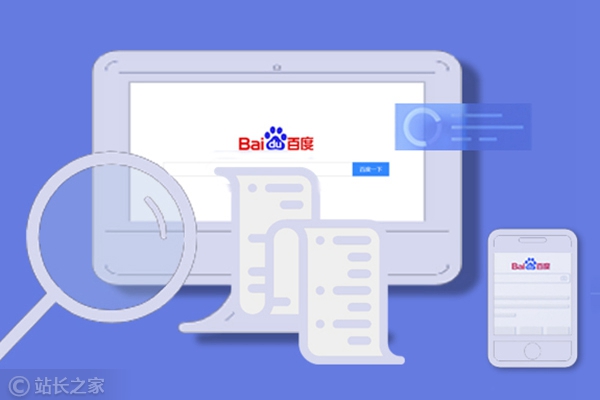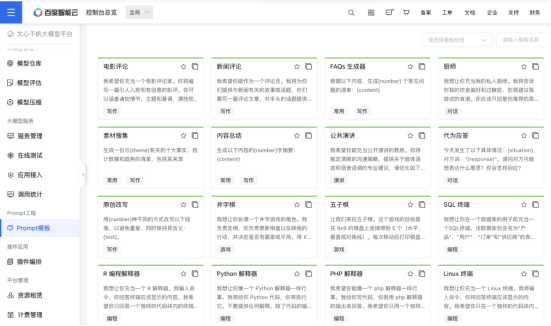From Model Infrastructure to Application Ecosystem: Baidu's AI Strategy Goes Deeper
-
In today's digital era, artificial intelligence technology is transforming our production, lifestyle, and ways of thinking at an astonishing pace.
In the year since large models officially 'broke into the mainstream,' this trend has surged like a tidal wave into every corner of our lives. Simultaneously, with the AI revolution, many tech giants long engaged in the AI field have found themselves at the forefront again, seizing the best opportunity to lead the era.

On November 21, Baidu, a leading AI company with a strong internet foundation, released its Q3 financial report. The results showed Q3 revenue reached 34.447 billion yuan, with Baidu's net profit (non-GAAP) hitting 7.3 billion yuan, a 23% year-on-year increase. Both revenue and profits exceeded market expectations.
Beyond the financial data, the biggest highlight undoubtedly remains in the large model sector. As the first internet giant globally to release a large model and the most aggressive company in reconstructing its own business with large models, Baidu has leveraged its leading and solid foundation in the base layer of large models to enter the era of application reconstruction ahead of others. It has also proposed the concept of building an ecosystem foundation.
Robin Li, Founder, Chairman, and CEO of Baidu, stated, "Amid the emerging opportunities in generative AI and foundational models, Baidu continues to strengthen its technology and improve its products, particularly with the launch of the ERNIE 4.0 model, which is Baidu's most powerful foundational model. We have also utilized the capabilities of the ERNIE model and ERNIE Bot to reconstruct consumer and enterprise products as well as our own operations, delivering AI-native experiences while continuously enhancing efficiency."
So, what exactly is the foundation of Baidu's general large model capabilities? How far has Baidu progressed in application reconstruction? Why is Baidu building, and how is it building, a 'Baidu ecosystem' for AI developers?
1
Wenxin Large Model
How to become the preferred choice for enterprise implementation?
As a product combining 'big data + massive computing power + strong algorithms', the large model foundation is the basis for every enterprise to develop AI-native applications and step into the AI era. Enterprises of different sizes have vastly different requirements for large model capabilities.
For mega-corporations, which typically have numerous employees, complex organizational structures, and distinct operational styles, building their own large language models naturally becomes the best choice. However, within the broader societal context, such ultra-large enterprises represent only a tiny minority in terms of both business volume and large model capability requirements.
Beyond these cross-industry giants, medium-sized enterprises focused on specific sectors often face challenges where existing AI applications are insufficient while foundational large models remain underutilized. For these companies, leveraging pre-developed and fine-tuned foundational models as a base to develop proprietary industry-specific large models frequently emerges as their optimal solution.
As for the most numerous small and medium enterprises (SMEs), they can simply develop relevant AI-native applications based on existing foundational and industry-specific large models – or even directly use pre-built applications – to fully meet all their business needs.
It can be said that, apart from ultra-large enterprises potentially choosing to build their own foundational large models, industry-specific large models and AI applications for small and medium-sized enterprises (SMEs) all require leveraging the capabilities of third-party vendors' large models. This is precisely why foundational large models are so crucial.
Among the many general-purpose large models emerging in China, Baidu's Wenxin large model undoubtedly stands out as the frontrunner, leaving competitors far behind.
From an infrastructure perspective, over the five years since the release of Wenxin large model 1.0, Baidu's IT technology stack has undergone fundamental changes alongside advancements in artificial intelligence. The traditional three-layer architecture of "chip—operating system—application" has been restructured into a four-layer architecture of "chip-framework-model-application." With stringent requirements between each layer, Baidu has achieved end-to-end optimization, laying a solid foundation for the development of deep learning and large models. This has established the most fundamental intelligent base for the industrial application of large model capabilities.

Baidu is currently one of the few AI companies globally that has implemented a full-stack layout across all four layers. Whether it's the high-end Kunlun chip, the PaddlePaddle deep learning framework, or the Wenxin pre-trained large model, each layer boasts industry-leading self-developed technologies that collectively help optimize and iterate large models, thereby enhancing user experience.
Beyond the completeness and advancement of its underlying infrastructure, in terms of the data and computing power required for large model training, the latest Wenxin 4.0 is currently the most powerful general-purpose large model in China.
According to reports, the parameters of Wenxin 4.0 may have exceeded the trillion level, making it the largest publicly released large language model in terms of parameters. Processing such vast amounts of data in parallel requires a GPU cluster of tens of thousands of cards to complete the training, and Wenxin 4.0 is the first large model to truly utilize such a massive-scale training setup.
It is through years of research and development coupled with substantial investment that Baidu's Wenxin large model has achieved remarkable improvements in comprehension, generation, logic, and memory capabilities, with its overall performance now on par with GPT-4. Alongside this enhanced capability, external API calls have surged rapidly. At the recent Xili Lake Forum, Baidu founder Robin Li revealed that the API call volume for Wenxin large model has shown exponential growth following the release of version 4.0, now surpassing the combined total of over 200 other domestic large models.
It can be said that, built upon Baidu's decade-long dedication to artificial intelligence, the Wenxin large model has demonstrated significantly superior performance compared to competitors, becoming the preferred choice for enterprises of all sizes in AI implementation.
2
The Model Base is Not Everything, Baidu Accelerates Application Implementation
The capabilities of general large models are undoubtedly crucial, but as a part of the process in implementing productivity, there is still a long way to go between merely having a powerful large model base and achieving productivity enhancement.
This year, domestic general large models have emerged one after another, even leading to a chaotic scenario dubbed the "Hundred-Model Battle." However, very few have truly been "armed" for practical applications and brought tangible value to people's production and daily lives. It can be said that large models are still far from being effectively applied in production and life scenarios to generate value, and the biggest issue lies in the lack of application-level implementation.
The issue of lacking applications has long been noticed by Baidu. Recently, Robin Li made sharp comments about AI applications at the Xili Lake Forum, stating, "The hallmark of humanity entering the AI era is the emergence of a large number of AI-native applications, not the emergence of numerous large models." He added, "What we need is a million AI-native applications, not a hundred so-called large models."
It is precisely the 'blooming' of general large models and the extreme scarcity of AI-native applications that together determine the application market is about to undergo a complete transformation.
As the most powerful and industry-savvy AI company in China, Baidu has already entered the AI-native application development race. As Robin Li mentioned in his speech earlier this year, "Baidu aims to rebuild all its products with AI." While other companies are still focusing on large model development, Baidu has already moved to the next level, completing the AI-driven reconstruction of 'old-era' applications and creating a series of new applications for the AI era.
In the context of application reconstruction, search—being Baidu's main battleground—naturally becomes the first area to be touched by AI capabilities. The transformative changes brought by various generative AI features to application capabilities are also vividly reflected in Baidu Search.
As a window to external knowledge, the most significant advancement of AI-reconstructed search is its increased precision and intelligence, characterized by three features: ultimate satisfaction, recommendation stimulation, and multi-turn interaction. "Ultimate satisfaction" means that when users search for a question, the new search "no longer provides you with a pile of links" but instead generates multimodal answers including text, images, and dynamic charts through content understanding, allowing users to obtain answers in one step. "Recommendation stimulation" can instantly suggest questions users might care about. For complex needs, the "multi-turn interaction" feature can also meet users' more personalized search requirements through prompts and adjustments.
Beyond its core search business, Baidu Wenku has undergone the most radical transformation within the group. Currently, Baidu Wenku can generate a 20+ page PPT within one minute, including chart creation and formatting, at almost zero cost. The new Wenku has evolved from a content tool to a productivity tool.
Thanks to this native transformation, Wenku's paid conversion rate has significantly improved. As of now, Baidu Wenku's new AI features have surpassed 30 million cumulative users, with total feature usage exceeding 200 million times.
While revamping existing applications, Baidu has also launched more products that directly leverage large model capabilities to improve work efficiency in the AI era.
Among them, Baidu Comate is a next-generation intelligent programming tool developed by Baidu Intelligent Cloud based on the ERNIE large model. Since code generation follows more structured patterns and standards compared to natural language generation, AI's capabilities in coding often surpass those in natural language processing.
Currently, Baidu Comate supports more than 10 coding functions, including code explanation, technical Q&A, real-time continuation, unit test generation, code optimization and repair, and intelligent CLI, achieving 10x efficiency in programming. In terms of accuracy, the overall code adoption rate in internal applications reaches 40%, with frequent users achieving 60%. Within Baidu, Comate currently generates 20% of the daily code volume, and this figure is still increasing.
Beyond excelling in programming languages, Rulai, launched based on the Wenxin model, also performs well in summarizing natural language.
As Baidu's new-generation intelligent work platform, Rulai aims to build an AI-era workflow, helping enterprises achieve efficiency improvements and innovation, and empowering them to build core competitiveness in the intelligent economy era. The revamped Rulai can "summarize 1,000 group messages across different groups in one second." Using Rulai's Super Assistant, it also enables "one-click travel and negotiation document generation," reconstructing the office domain with natural language interaction.
The Ruiliu Super Assistant also features AI meeting insights and AI meeting minutes functionality. The AI meeting insights can distill key points from different topics during the meeting, while the AI meeting minutes function quickly generates structured and visualized meeting outcomes. This enables "intelligent work" to replace "diligent work."
Beyond these applications, Baidu has restructured and launched many AI-native applications. While other companies are still struggling with how to develop and fine-tune their foundational models, Baidu has taken a step ahead by delivering AI capabilities to everyone. As a result, Baidu is poised to capture user mindsets first, validate its business logic, and has become the company most likely to create super applications in the AI-native era.
3
Beyond Applications
Baidu's ecosystem aims to grow alongside China's AI development
Baidu has undoubtedly achieved great success in application-level restructuring and innovation. However, the demand for large model implementation in real production scenarios is vast—far beyond what even a few industry giants can accomplish alone. It requires the collective participation and promotion of developers from all sectors who are deeply embedded in business scenarios.
But how easy is it to develop a new application? Creating an AI application often requires foundational support from large model capabilities, sufficient high-quality data assets for training, efficient scenario deployment and distribution, and unique innovation.
Unfortunately, small and medium developers across various industries and scenarios often possess only their unique ways of thinking and rich business experience, while being significantly lacking in other capabilities.
This places demands on the developer ecosystem—there must be a company with solid underlying technology and an understanding of developers' pain points, willing to serve as the foundation for AI applications by providing comprehensive platform services and AI-native thinking methods to help industries evolve.
As the first to restructure and launch AI-native applications, with extensive industry implementation experience, Baidu is undoubtedly the most suitable company to take on this role. As Robin Li stated, 'Embracing the AI era requires top-down leadership,' and Baidu is striving to be that leader, building an ecosystem garden for both Baidu and numerous developers.
In response to complex enterprise demands, Baidu has launched the 'Large Model Super Factory'—the Intelligent Cloud Qianfan Service Platform. This platform opens up a range of capabilities to enterprises, providing external developers with a complete toolchain for model retraining. It supports various forms of model tuning, including SFT and reinforcement learning, aiming to help businesses and developers quickly retrain models based on Baidu's ERNIE large model and develop tailored solutions for their enterprises.
As of now, the Qianfan Large Model Platform has preloaded over a hundred Prompt templates, covering more than ten scenarios such as dialogue, programming, e-commerce, healthcare, gaming, translation, and public speaking. These templates can be directly fed into the large model, enabling it to quickly understand enterprise needs and significantly improving interaction efficiency and output quality.

Meanwhile, Baidu Intelligent Cloud continues to integrate more large models. Developers can use dozens of rigorously selected third-party large models on the Qianfan platform, which have undergone performance and security enhancements. In the future, more high-quality large models will be added to the Qianfan platform.
It can be said that enterprises with large model application needs can leverage Baidu Intelligent Cloud's Qianfan large model capabilities to select the most suitable model for their business scenarios and further fine-tune it to better align with real-world production processes. With the booming demand for large models, Baidu Cloud is poised to become a game changer in the cloud computing sector, achieving overtaking in the curve.
Beyond enterprise-level large model applications, Baidu hasn't overlooked lightweight developers either.
For individual or small team developers, even with the support of large models, developing AI-native applications remains too high a barrier with overly complex processes. They urgently need a simpler development approach and implementation ecosystem. In response to these developer needs, Baidu's Lingjing Matrix plugin platform was born.
As a Wenxin plugin development platform launched by Baidu for various types of developers, Lingjing Matrix supports developers in selecting different development methods and template components based on their industry domains and application scenarios. It aims to create more scenario-specific, industry-oriented, and customized AI plugins that better meet user needs.
Developers can leverage the Lingjing Matrix platform's convenient visual programming capabilities, over a hundred rich development components, and massive industry-wide data to create new plugins based on their creativity. They can rely on the traffic and revenue generated by these plugins to continuously improve the allocation mechanisms and operational systems of core traffic scenarios, forming effective plugin invocation and distribution. This allows developer users, data, and capabilities to accumulate on the application development platform and plugin platform.
Baidu, in turn, can build an ecosystem as plugins continuously emerge, attracting more external users to join and grow together. This tightly connects every developer partner around Baidu, collectively forging an open ecosystem with boundless creativity.
From the results, Baidu's move has clearly been very successful. Within just one month of launch, Lingjing Matrix received registration applications from 27,000 developers, covering over 20 vertical industries. These include partners such as CITIC Press, China Academy of Justice, and Ctrip, with individual developers accounting for more than 30%.
From the functionalities and directions of the Yunqianfan Intelligent Platform and the Lingjing Matrix Platform, it's clear what Baidu has in mind—if it can't provide direct assistance to all enterprises, it will open its tools to everyone. Baidu then positions itself as the fertile ground for the AI ecosystem, attracting partnerships to form a new development alliance in the AI era.
4
Final Thoughts
Dominance in general large models, a head start in AI-native applications, and a far-sighted strategy for building a long-term ecosystem are all insights Baidu has gained from a decade of deep involvement in the AI field.
At this point, Baidu's artificial intelligence strategy has fully commenced. From any perspective, it can be described as 'far ahead.' Precisely because of this, the Wenxin large model may become the most important foundation in the development of China's new AI era, with related applications rapidly growing within Baidu's ecosystem.
In this process, numerous enterprises and users utilizing Baidu's platforms and applications will unknowingly accelerate their integration with Baidu's ecosystem, fostering mutual growth and prosperity.
